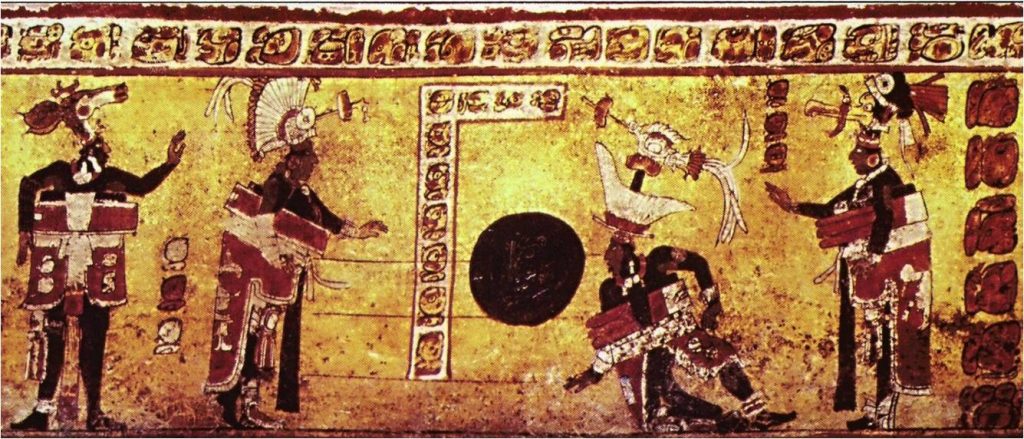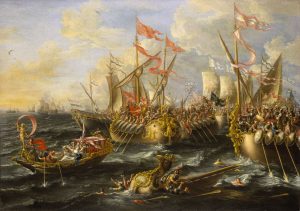El juego de pelota, dating back to 1500 BCE, is known as the oldest ball game ever created in human history. It was played across many Mesoamerican civilizations and recognized as one of the most solemn events of that time. The game held religious, social, political, and ritualistic significance unlike any other. This sport was more than just a game, but quite frankly, it was an event that often resulted in life or death.
The origins of this game are not precisely known, but many historians believe its first appearance to have derived from the Olmec society, the first major civilization in Mesoamerica.1 The Olmecs, who inhabited the gulf coast of Veracruz, were recognized for their development of latex in the pre-classical era. In fact, many game balls consisting of latex have been recovered from the region and have led historians to believe this evidence to be the origins of this great, ancient game. As millennia have gone by, several different Mesoamerican civilizations have adopted this sport and created their own unique styles of play. However, the general idea of the game was never changed.
The ball game consisted of two teams, ranging between two to four players. The players would wear protective garments and sometimes dress up in representations of an animal. Depending on the situation and culture, players would compete on uniquely structured ball courts. On game-day all members of the society would gather around with excitement for the big match up. Unfortunately, this was no light matter, and nothing close to our typical spectator-sports.2
There has been approximately thirteen-hundred courts discovered, from the state of Arizona to the southern most parts of Paraguay. These courts were comprised of a large, flat field with two walls on each side. Typically, these walls would be slanted. However, with many different cultures, these ball courts were not all the same across the geographic regions. However, they all had one thing in common: a ring mounted on the wall (whether it was flat or slanted). This large stone ring (on both sides), standing high and tall on the wall, would be the area where the players would aim to score. The goal of the team was to hit the rubber ball, without using their hands, into the mounted ring. In order to hit the ball, they would propel their bodies and fling their hips. This difficult motion made the game a challenge, and it was only capable of being played by a select few of each society.3

Unlike any other game, it was made up of tactical movements rarely seen in today’s professional sports. Players risked severe injuries by throwing there bodies across the stone court. In addition, the impact of the rubber ball could cause horrible bruising, often leading to internal bleeding, and possibly even death. If the game did not kill the player, the outcome certainly could. Due to the game’s religious nature, players who lost the match would often be sacrificed to the gods and killed in a ceremonial event.4
This game was a big influence across societies in Mesoamerica. It was not only a sport, but a highly regarded event. The Mayans considered it an opening to the underworld and intertwined the sport with mythological significance. The cost of losing would conclude in a sacrificial act; in this way, members of the society were able to keep their gods happy and ultimately balanced. As time went by, when the Aztecs adopted the game, it was seen as a problem solver. Players would compete on the stone courts, fighting for hierarchy and dominance. This formal competition would also lead to solving political conflicts. It was a great act of gamble, and certainly one with great significance.5
No matter the society, this game left a most distinctive resonance. It endured through many civilizations as the centuries went by, and created a sport with rich meaning. Whether through the symbolism of mythological gods or simply for the sake of competition, this ball game left details and stories of the once great civilizations of Mesoamerica. Although today’s evidence is limited, the message given across these magnificent stone courts is clearly shown.
- Jeffrey P. Blomster, “Early Evidence of the Ballgame in Oaxaca, Mexico,” Proceedings of the National Academy of Sciences of the United States of America 109, no. 21 (2012): 8020–25. ↵
- Salem Press Encyclopedia, January 2015, s.v. “Mesoamerican Ball Game,” by David A. Crain. ↵
- Colleen P. Popson, “Extreme Sport,” Archaeology 56, no. 4 (October 9, 2003): 42–48. ↵
- Zaccagnini Jessica, “Maya Ritual and Myth: Human Sacrifice in the Context of the Ballgame and the Relationship to the Popol Vuh” (Honors Thesis, Southern Illinois University Carbondale, 2003), 2-11. ↵
- World History Encyclopedia, 2011, s.v. “Mesoamerican Ball Courts – Fusing Game and Religion,” by Alfred J. Andrea and Carolyn Neel. ↵



70 comments
Mario Sosa
After reading this article, I can see why people in today’s world would never fully replicate El juego de pelota. To us, it must seem insane for someone to play this game knowing the possibility that they may get sacrificed. To the Mayans, they probably saw the game as a win-win situation. Either you won the game, or you kept the gods happy through your sacrifice. Wonderful article, great job!
Faisal Alqarni
Hey Erik,the moment I saw the image you have used here I was surprised at how it looked so much like the indians were playing base ball. I am suprised to learn that the Veracruz had developed latex by the pre-classical era. The number of playing courts was a very impressive thing to know off. This game it seems was a unting glue for the many people of Mesoamerica given the detail and investment they did into it.
Nelson Smithwick
The idea that losing a simple game could result in your death (not to mention one could still die from injuries sustained if you won) is crazy. The fact that it was even seen as a way to settle political disputes is just mind-boggling to me, but then again, people in the future might think we were crazy for paying millions of dollars a year to watch people fight until one is rendered unconscious.
Sam Vandenbrink
Crazy to think this is where sports all started, now they continue to have incredible impacts on people lives every day. Now we use a ball for a majority of our sports, I guess its safe to say we can thank the Mesoamericans for all the great sports we have today. Because without the idea to start games with a ball they would have never been invented. Great article, really enjoyed the read because I felt like the topic was supported very well.
Marissa Gonzalez
It is crazy to understand someone going onto the field to play a game knowing that they might die. I feel that this sport was a crazy game and entertaining during that time but in my opinion, it is not worth one’s life just to play a game. The injuries mentioned would make me afraid to play in the first place, let alone being sacrificed is much worse to know. If someone loses a game today, they might feel sad or upset or their coach might make them work harder at practice. However, times have changed and this article was very interesting since there still are fields found today. Great article!
Aaron Mcglown
Ok this was a good article! I dont know anyone in this generation who would be crazy enough to play that game. Im definitely not gonna play a game that i could die in every time i play so its crazy to hear that people back then knew the consequences and still went out and played. This was a very informative article, i loved it!
Samuel Sanchez
Amazing Article. I never knew such sport ever existed but astonishing. The risk of playing was tremendous. It was either win or die trying takes whole meaning of giving it your all. How the game was interesting I did not know that such movements of the hips were done in order to just play the game. People think football is dangerous wait until they hear about this game. Makes football seem like childs play.
Mariana Govea
What an interesting read!! That is so crazy!! All these people were so crazy! I find it so fascinating reading about their customs, they are so different form ours now that that is what makes it so interesting to know about them! Even though I had heard that in the MesoAmerica culture a lot of sacrificing took place, I hadn’t heard of this juego de pelota! What an interesting and scary game because either way both opponents would end up either dead or severely hurt, so was the point of the game really to sacrifice everyone that played it because it was sure that, thats what they were doing!! Crazy to know that you had to be chosen to play it, as if it was a privilege which back then it was but to us now it sure isn’t!
Ana Gonzalez
I wonder if the players who lost at “el juego de la pelota” were terrified because they were going to be killed or if they were proud to die for their gods. I also wonder if young men volunteered to be in these sports or if they were forced to play. You chose a very interesting topic and your article is well written. It’s very interesting to read about the ways in which early civilizations invented games for entertainment. Great job!
Cameron Adelman
Interesting article. Reading about premodern sports (like jousting) is always interesting to me, especially when you hear how much culture is often infused into it (not unlike the culture we infuse into modern sports today). As far as the actual article goes, you had a few awkward points in your language usage (and that’s really a very minor criticism), but overall it was a very solid, well-executed piece. Great work.